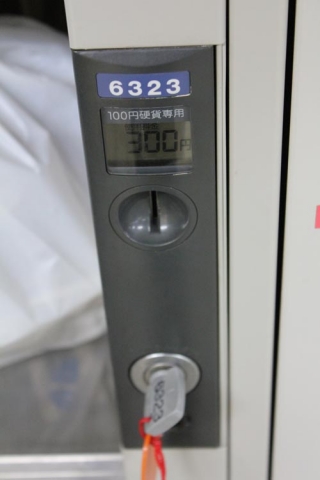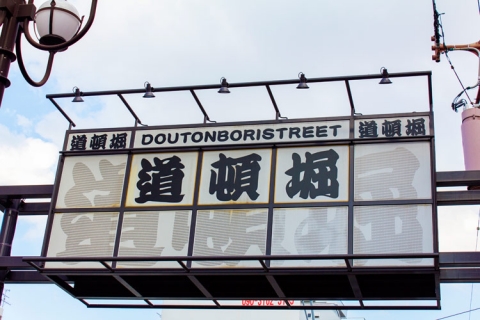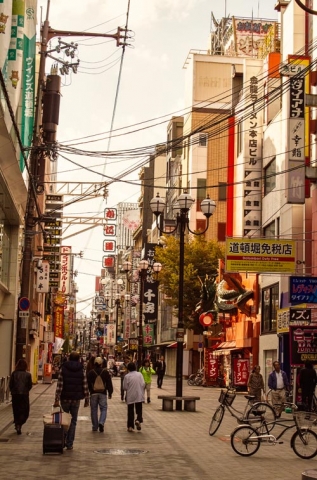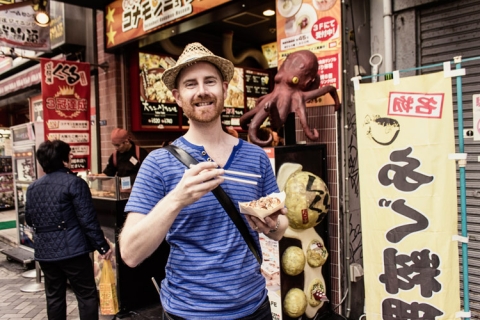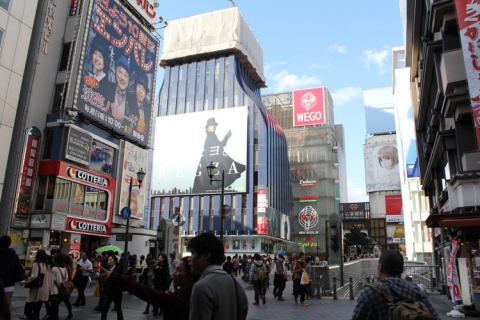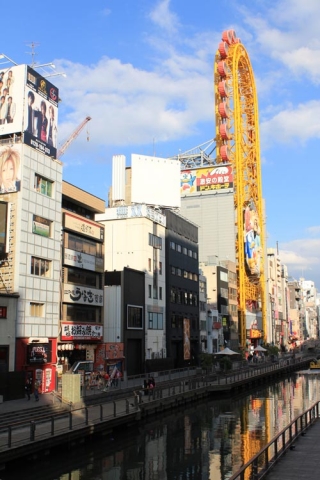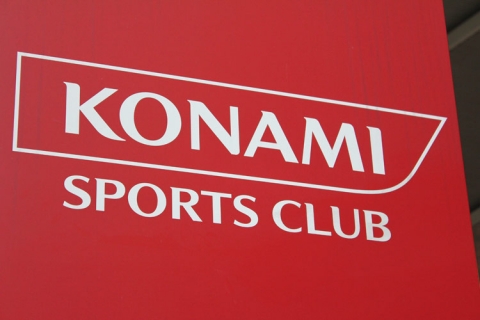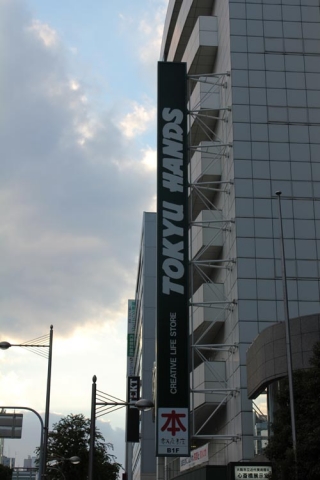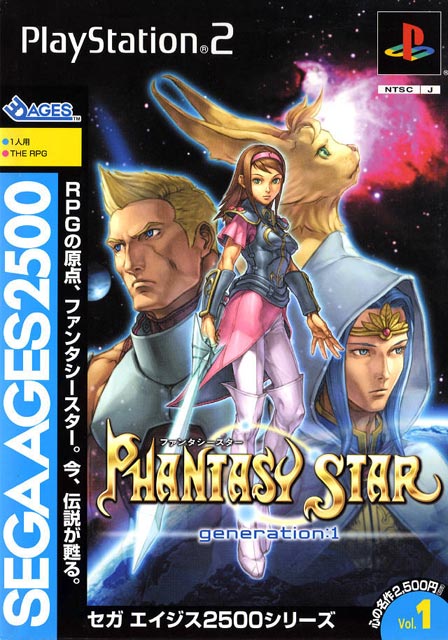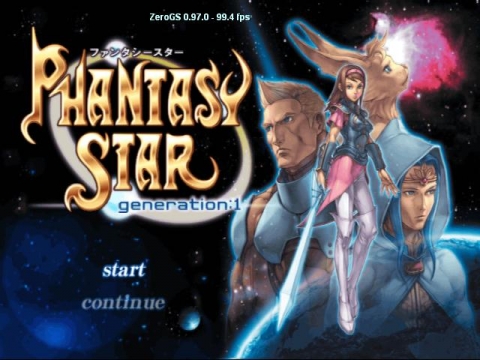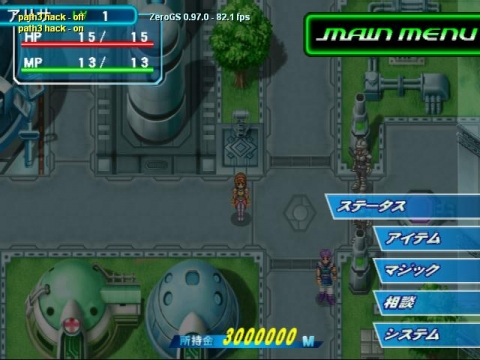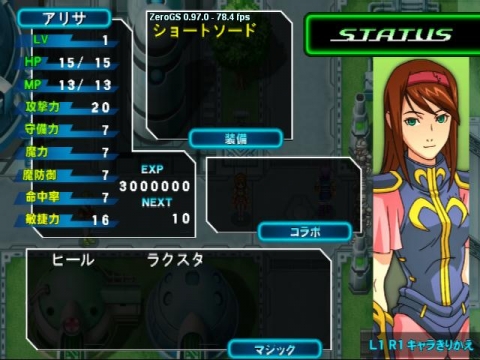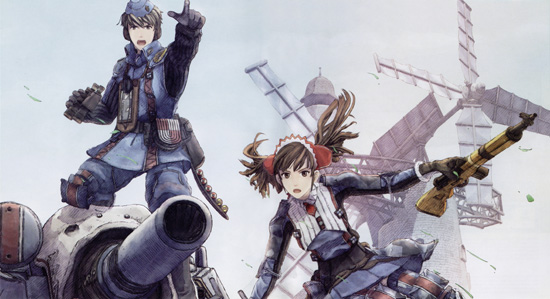Japan 2012 Travel Diary, Day 10
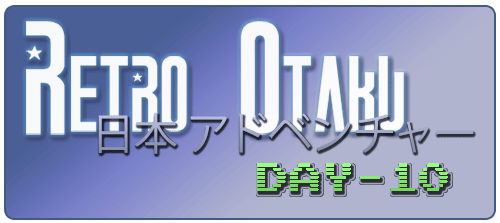
The first full day in Osaka was set as a half nerd/half not-nerd shopping day. Osaka houses the west-coast equivalent of Akihabara, Nipponbashi or Den Den Town, so we had planned to head over there in the morning and then jump over to the Dotonburi shopping district in the afternoon. To make things more time-efficient, I used Sebaattori’s excellent blog entry on retrogaming in Osaka as a base and headed to the Ebisucho Station via the Sakaisuji line, exit 1-B, and found Super Potato two meters to the right of the exit once we got out onto the street. We ended up crossing over the other side to check out the Sofmap over there only to realise the Sofmap on the same side of the street as Super Potato (and our other destination, Game Tanteidan) was where we needed to go.
Before going on, I have to say that Nipponbashi is a completely different beast than Akiba. Where Akiba is gaudy but full of life, Nipponbashi is gritty, grimy and dark; Wifey commented the same, and where in Akiba she felt pretty comfortable and found the spectacle entertaining, she felt a bit uncomfortable in comparison in Nipponbashi. We started off hunting for LDs in a store on the corner before starting the nerd run, and once again inadvertently walked into the porn section on the second floor (which felt a little more seedy than the other accidental walk-ins). Exiting, we headed to Sofmap and found their retro collection was located across 6 bins (3 x 3 – so two rows), where the whole thing was a bit of a mess. Games in there were certainly cheap enough (I grabbed Virtua Cop 2 for only ¥50), but it was a lot of effort for comparably little return time-wise, so we left after grabbing the above and headed to Game Tanteidan (or to use Sebaattori’s translation, Game Detectives).
The store isn’t massive, but the selection is fantastic and pricing wasn’t too shabby either considering we were shopping in an urban area – on the whole, it was probably 10% to 20% cheaper than Akiba, though in some instances it was also more expensive (consistently inconsistent then!). The bottom floor is where the hardware is (they had a set of boxed Virtual On Twin Sicks for the Saturn for only ¥960!!), as well as most of the software. The Famicom selection is extensive, but being conscious of time I wasn’t in a position to go through everything individually, and instead prioritised the Saturn and DC, and checked out a couple of Super Famicom games and some Mega CD titles. Upstairs is dedicated to MSX, collectible cards, game music and art books (and probably guide books as well). Up here I was fortunate enough to find a copy of the Phantasy Star Compendium art book for around ¥3500 and snapped it up, then grabbed some titles from downstairs on the way out, with my amazing and patient wife helping by holding onto games while I shopped (and by now I’m sure you’ve noticed that Wifey being amazing and patient has been a continuing motif throughout this entire trip!).
I was debating whether to go to Super Potato as I heard the prices there were really expensive, but Wifey said I should still go in, and as always she was right 🙂 We skipped the bottom floor as per Sebaattori’s advice and went straight to the second floor where the retro love is. Since the shelves weren’t quite as packed as Game Detectives, more games were facing with the label-side visible rather than the spine, so it made it faster than relying on my not-so-speedy ability to read Japanese to trawl though carts 🙂 I ended up buying some more gear from there, as price-wide they were often similar to Game Detectives, with some titles more expensive and some gear cheaper (they had piles of Model 1 Mega Drives for around ¥1500 a pop which was pretty cool, and Saturns for ¥3500), but of course the selection was a bit different which was great. We passed a couple of other gaijin in the shop taking turns playing Super Mario Kart which was pretty awesome too.
Where this Super Potato really came into its own were some readily accessible premium titles I was after – I snapped up Radiant Silvergun for a shade under ¥8000, Asuka 120% Final Burning Fest. for under ¥5000 (closer to ¥4500 I think) and a few other titles I hadn’t seen elsewhere (like Dead of Alive on the PSone for a cheap price too). Wifey, again being amazing, pointed me in the direction of the bargain bins towards the back where I snapped up a whole heap of goodies for ¥50-¥200, including a boxed Bishoujo Senshi Sailormoon and some loose Sonic carts for the Game Gear, Godzilla Generations and a few other DC games and a DC lightgun as well.
After exiting Super Potato, we headed back to Ebisucho Station and took the Sakaisuji Line up to the next stop (Nipponbashi) and jammed the nerd stuff into a coin locker (note to all tourists – coin lockers are amazing and should be utilised to reduce shopping fatigue!), then walked out and passed a couple of dodgy looking pachinko parlours (pachinko is huge in Osaka) before arriving at the start of Dotonburi, which signalled the end of nerd shopping and the start of food and Wifey-friendly shopping!
The general perception is that in Osaka you eat and drink your fill when you’re out, and the proliferation of so many places to grab a bite down this street was impressive and set your belly rumbling. We passed all manner of cuisine, but being Osaka we knew we had one destination – takoyaki.
We ended up stopping off at a place with an impressive line-up considering the time of day (close to 3pm if memory serves), so I jumped in and managed to order a small selection of takoyaki to share with Wifey. As much as I enjoyed the goodies from the night before, I’m pretty confident that these topped them and were mouth-burningly delicious. With our belated lunch sorted out, it was time to work off all that yummy batter with more shopping.
Doutonburi is a long and densely-packed open-air mall, with shops initially sitting along the main street when you enter it from where we came from. As we progressed though, the foodie haunts gave way to all manner of shops and amusement centres, and these eventually gave way to labyrinths of other enclosed strip malls spidering off the main street. The scale really was impressive and we barely scratched the surface, instead prioritising a visit to H&M across a bridge that showed off some amazing views of the concrete jungle that is Osaka (no H&M locally and the EU sizes meant it wasn’t too tricky to work out what to buy).
As the afternoon wore on, the middle and high school students hit the pavement and Doutonburi became alive with a sea of people. Apart from catching up and going shopping they were also checking out some live performances on one of the bridges that lead over to H&M and all manner of other gear was happening in the area. We ended up doing some shopping and purchasing around this part of Doutonburi, and I have to take this spot to give huge credit to the incredible pride the Japanese guys put into looking the part when they head out. I felt comparatively under-dressed sporting jeans and a t-shirt (the humidity meant I couldn’t layer stuff otherwise I would have become a sweaty gaijin, which isn’t a good look!), but it was great to see pride in appearance and passion in the stores with guys out shopping in force. There was also an abundance of headwear that I picked up while we were over there (one of the catches with being a ranga with a thinning hairline means hats are a bit of a necessity these days!), and they’ve certainly been put to use as the Australian summer kicked in locally.
After finishing up there we wandered our way to the nearby Tokyu Hands department store at Wifey’s very sensible insistence (passing a Konami fitness club on the way!).
I didn’t know much at all about Tokyu Hands before we visited, but I cam away really impressed with it! It’s a multi-story department store with a tip towards the more affordable end of the spectrum, and while we were there we bought a couple of souvenirs and a lightweight piece of luggage to accommodate all the crap we had bought to date (I can’t recall the cost, but it was incredibly lightweight and strong, with four wheels on the base for easy movement and was extremely good value). The only trick with purchasing the luggage was that I got my Japanese mixed up, but between my command of the language and a touch of English, everything got sorted out and after 5-10 minutes a staff member brought out a fresh, new piece of luggage from the storage area out the back. With the new luggage in hand, we headed back via the train station to grab the nerd haul from the coin locker to take home with us. Turns out it all fit quite nicely inside the new piece of baggage too and made it very easy to take all our shopping back to our hotel!
We dropped our collective haul off at the hotel before hitting the Universal City Walk again for dinner (yes, we were being a bit lazy by relying on going somewhere so close to the hotel rather than exploring more of Osaka at night!), settling for Mos Burger as Wifey was interested in more comfort food as she continued to fight off her cold, and then picked up a banana and strawberry crepe from the crepe stand and more drinks from Starbucks (being the manly-man I am, I continued my addiction to their mango passion iced tea, while Wifey grabbed a mocha espresso to warm up) to finish off at our hotel.
Osaka continued to gel with us after a day of shopping – while not as clean as the other cities we visited, the place was full of life and everyone seemed to be milling about with purpose. The nerd run to Nipponbashi blew a reasonable wad of cash, but it was so much fun and while you’re paying a bit extra for the convenience, when you’re strapped for time it’s a pretty good compromise in my opinion. Time’s the central key point here I guess – there was so much more to explore in Osaka and we only touched on Nipponbashi, Doutonburi and the immediate surrounds of our hotel during the day. We also needed bigger gaijin appetites to take advantage of all the amazing street food, and that’s not even counting the copious flow of cheap and tasty beer on offer either!! I have a feeling we’d have trouble keeping up with the locals, but I’m sure if Wifey and I get back to Osaka in the future we’ll be ready to give it another crack!
To view all posts on the Japan 2012 Travel Diary, just use the 2012 Japan Trip tag, as the whole series will be added to it over time.

